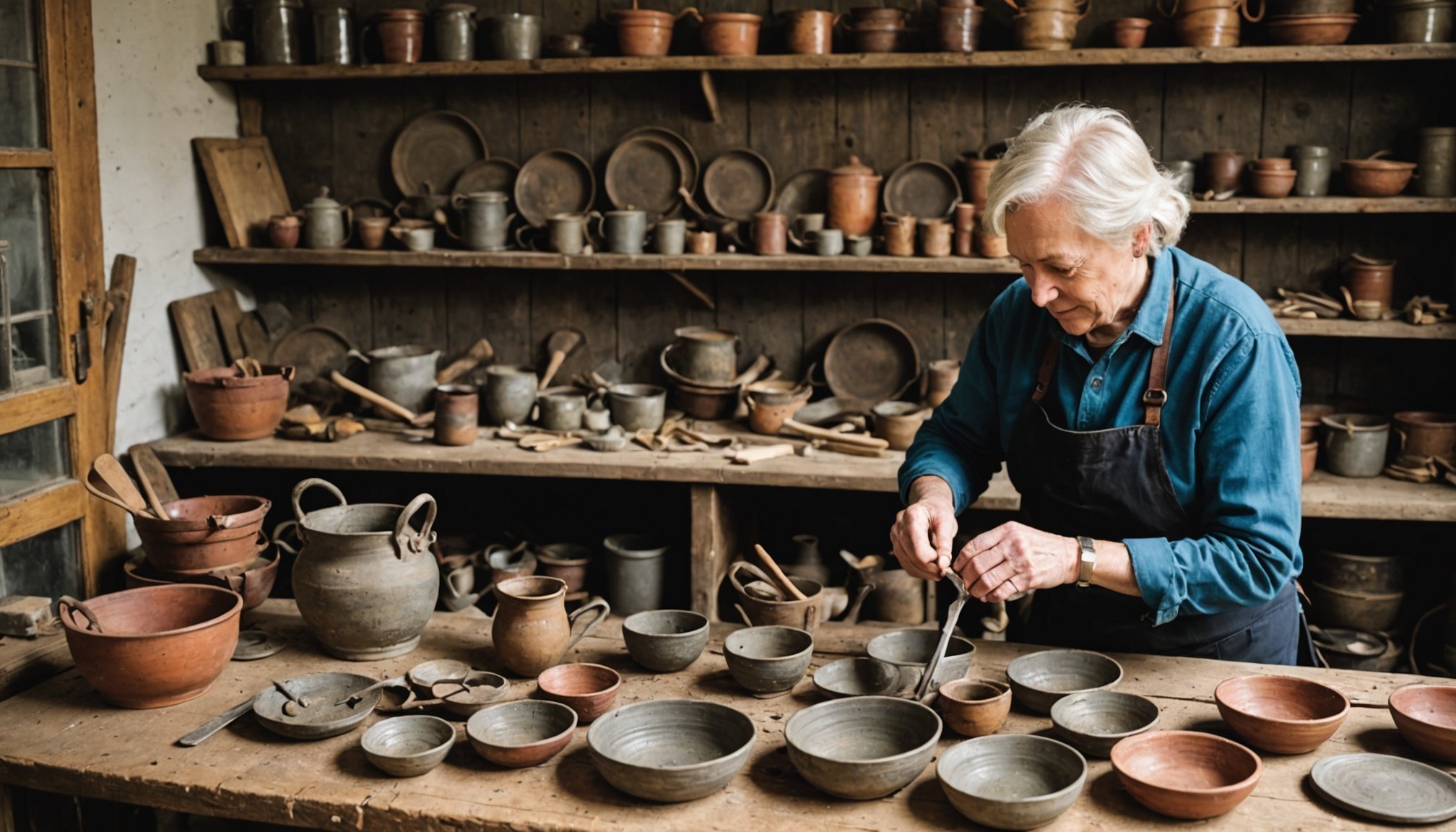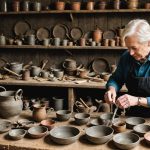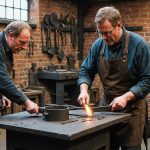Overview of Local Artisan Crafts in the Lake District
The Lake District, known for its breathtaking landscapes, also boasts a rich tradition of local artisan crafts. This culture has evolved over centuries, from humble beginnings of crafting out of necessity to a celebrated art form. What sets the artisanal works of the Lake District apart is their unique blend of tradition and stunning natural inspiration.
Lake District artisans often draw from the surrounding environment, using locally-sourced materials such as wool, wood, and stone. This not only ensures the sustainability of their works but also embodies a deep connection to the land. The region is famed for its intricate textiles, handcrafted ceramics, and bespoke woodwork, each piece telling a story of its origin.
In parallel : Explore memorable holidays in Montreux: your ultimate guide
Supporting local artisans is pivotal in preserving this rich craft culture. By purchasing locally-made goods, consumers foster the economic growth of the community, ensuring the survival of age-old techniques passed down through generations. Moreover, these crafts represent more than mere objects; they are symbols of a lifestyle that honours tradition and creativity, offering visitors a tangible connection to the region’s essence. Embracing the Lake District’s artisan crafts is a celebration of both heritage and innovation.
Types of Artisan Crafts Available
Exploring the types of crafts available reveals a world rich in tradition and innovation. Among these, pottery, textiles, and woodworking are prominent, each offering unique appeal and technical skills.
Also read : Discover the cotswolds” top artisan cheese makers: your essential guide to gourmet delights
Pottery and Ceramics
Pottery and ceramics stand as time-honoured arts, blending utility with beauty. Artisans work with clay to create functional items like bowls and vases. The process often includes shaping, firing, and glazing, yielding stunning results. Notable ceramicists, such as Grayson Perry, showcase how modern-day pottery can challenge the boundaries of art with their vibrant and culturally reflective pieces.
Textile Arts
The textile arts encompass practices like weaving, embroidery, and dying used to create both decorative and functional textiles. This craft requires meticulous attention to detail, as seen in the intricately designed textiles of Kaffe Fassett. These beautiful creations highlight how textiles can be used to express individual creativity while preserving cultural heritage.
Woodwork and Furniture
Woodworking artistry transforms raw logs into stunning pieces that merge functionality with aesthetics. Furniture making and carving are key areas within this craft. Notable artisans such as George Nakashima demonstrate how wood’s natural beauty can be preserved while forming functional pieces, offering enduring elegance and sophistication in each creation.
Discovering Hidden Gems
Exploring hidden artisan crafts can lead to exciting and unique finds in local craft shops. These treasures often reflect the cultural heritage and creativity of a region, making them highly sought after by those who appreciate unique items.
To uncover these hidden gems, one must begin by seeking out less-known artisan shops. Avoid the well-trodden tourist routes and venture into the lesser-known alleys where local artists often exhibit their creations. It can be helpful to talk to residents, who can provide insider tips and recommendations on places where vibrant craft scenes thrive.
Some towns are renowned for their artisan creations. In the UK, for example, a visit to St Ives in Cornwall or Whitby in North Yorkshire might reveal a multitude of craft shops offering authentic local products. These places often host artisan markets where artisans gather to display their crafts, providing a wonderful opportunity to find something authentic and local.
When searching for genuine local products, consider looking for items that use traditional techniques or locally sourced materials. Authentic local crafts often carry a unique signature from the artisan, ensuring the item is a true reflection of regional artistry.
Locations and Maps for Artisans
While exploring the Lake District, tourists can now utilise interactive maps to discover amazing artisan locations. These maps vividly display where talented artisans are situated, enabling visitors to craft their perfect artisanal journey. The maps offer a convenient way to find pottery studios, glassblowers, and woodworkers nestled in this picturesque region.
When planning your tour, it’s wise to choose best routes that maximise your experience. Opt for paths that pass through areas with breathtaking scenery, allowing you to appreciate the natural beauty alongside the craftsmanship. Many maps suggest routes weaving through artisan-rich regions, offering a delightful combination of sight-seeing and shopping. These routes also highlight stops with high concentrations of artisans, providing opportunities to meet skilled creators and see their work up close.
Consider visiting during local fairs or events, where craftspeople often gather. The maps frequently feature information on such happenings, ensuring visitors never miss an opportunity to engage with the Lake District tourism scene. Embrace these tools to not only enhance your travels but also to support local artisans, making your visit memorable and meaningful.
Profiles and Interviews with Local Artisans
Delve into the captivating world of artisans through revealing profiles and interviews, uncovering their dedication to craft and community.
Interview with a Pottery Artisan
Meet Jane, a passionate pottery artisan whose creations blend functionality with art. She describes her craft journey, recounting how it began as a hobby but quickly turned into an enduring passion. “Craft stories like mine often start with a hobby,” she explains, highlighting the profound joy she finds in each piece. Despite challenges such as fluctuating market demands and maintaining originality, Jane remains committed due to strong community support.
Profile of a Textile Designer
Encounter the innovative work of Tom, a textile designer weaving sustainability into style. His profile outlines a creative process steeped in tradition, yet forward-looking in its eco-conscious approach. Tom faces the dual challenge of sourcing sustainable materials and maintaining financial viability. Yet, community interactions, connecting with fellow artisans, and customer appreciation fuel his resolve.
Conversation with a Woodworker
Engage in a conversation with Mike, a skilled woodworker whose techniques breathe life into each creation. Mike shares insights into his craft journey, revealing his transition from novice to expert. Challenges include competition and finding high-quality materials. Nonetheless, Mike stresses how the community’s role, through support and collaboration, is indispensable.
Events and Workshops
Participating in artisan events and craft workshops can be an enriching experience for community members. These activities bring local artisans to the forefront, showcasing a diverse range of skills and artistry. Whether it’s pottery making, weaving, or handmade jewellery, the upcoming events are tailored to provide both entertainment and education.
Craft workshops are a fantastic opportunity for individuals to learn directly from skilled artisans. These workshops offer a hands-on experience, allowing attendees to not only observe but also engage in the creative process. You can learn techniques that have been honed over generations, adding to your personal skills while appreciating the cultural significance of these crafts.
Furthermore, community gatherings through these events foster a sense of togetherness and shared identity. By attending and actively participating, you enhance community engagement. This interaction is crucial as it offers a platform for building relationships, sharing knowledge, and preserving local heritage. Artisan events and workshops are not just about craft; they cultivate a robust community spirit that aids in regional development and personal growth. Engaging with these gatherings can transform your understanding and appreciation of local craftsmanship.
Tips for Purchasing Artisan Crafts
Investing in artisan goods can be a rewarding experience, but it’s important to ensure you’re making informed choices. When buying crafts, start by assessing the authenticity of the items. Look for signs of genuine craftsmanship, such as unique details and quality materials, which often reflect the artisan’s expertise and dedication.
Understanding pricing for handmade items can further guide your purchasing decisions. Consider the time, skill, and resources involved in creating the piece. Handmade items often carry a higher price tag, but this reflects the artisan’s effort and skill, ensuring you support fair compensation for their work.
Another crucial factor to consider is the method of purchase. Supporting local artisans by purchasing directly can offer multiple benefits. Buying crafts in-person allows you to form a connection with the maker and gain insights into their creative process. This can provide not only a deeper appreciation for the craftsmanship but also a more ethical purchasing experience, ensuring that more of your money goes directly to the artisan rather than intermediaries.
In conclusion, purchasing directly not only enriches your buying experience but also fortifies the sustainability and ethicality of your choices.
Visuals and Engagement Enhancements
Crafting the perfect visuals for storytelling in the world of artisanship is an art in itself. Artisan photography is crucial when showcasing unique crafts, as it captures not just the item but the essence of the craftsman’s dedication and creativity. Styles that emphasize natural light and intricate details often best encapsulate the spirit of these creations.
Integrating personal anecdotes into presentations of crafts elevates storytelling by adding a human touch. These stories can tell the journey of the artisan, capturing their dedication, struggles, and triumphs, which resonate more deeply with audiences. When an artisan shares their personal narrative alongside their crafts, it invites viewers to form a more personal connection with the items.
To effectively utilize visuals in local craft promotions, consider a strategy that balances stunning imagery with compelling narratives. This could involve showcasing behind-the-scenes footage or focusing on the craftsmanship process in social media campaigns. Incorporating live demonstrations or interactive elements into events can also boost audience engagement by offering tangible experiences.
Enthusiastic multimedia approaches ensure a memorable craft exhibition that urges potential customers to appreciate not only the item but the story and skill behind it.











